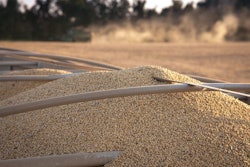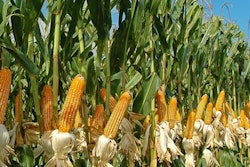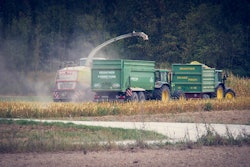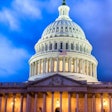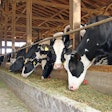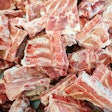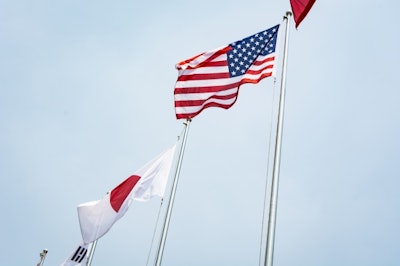
President Trump and Japanese Prime Minister Shinzo Abe announced initial details of an emerging trade deal between the two countries on Wednesday, with Trump saying it would open up Japanese markets to $7 billion worth of American products.
美国贸易代表办公室表示90% of U.S. food and agricultural products will receive duty-free or reduced-tariff access to Japan, but wheat will still be subject to a quota limiting the volume of U.S. imports.
Under the agreement, Japan will place the same level of agricultural tariffs on U.S. goods as it places on CPTPP countries and the EU. By way of example, the 38.5% tariff on U.S. beef will fall to the 26% placed on beef from Australia, Canada and the EU. Some other foods such as duck, geese, turkey peaches, melons and more would enter duty-free.
The Japanese Parliament is expected to approve the agreement later this fall. It may take effect as early as Jan. 1, 2020.
There is no action by the U.S. Congress necessary, as this is not a full trade agreement that involves substantive changes to existing U.S. law.
Many other issues, contained in a “Phase 2” negotiation, will be dealt with in future talks with Japan.
Grain Industry Reaction
The U.S. Grains Council (USGC) said the agreement will solidify a longstanding partnership for the future and create a platform for growth into new sales and new sectors, including the potential for sales of U.S. ethanol.
"Japan is one of the largest and most loyal U.S. corn customers, having bought more than $2 billion of U.S. corn in the most recent marketing year," says USGC President and CEO Ryan LeGrand. "It is an important market for food and feed barley and sorghum. And as a country looking to improve the environmental impact of its fuel, it is an important future market for U.S. ethanol products.
"The details revealed today about the trade agreement between the U.S. and Japan show that this pact would bring commodities the U.S. Grains Council represents largely back in line with the Trans-Pacific Partnership Agreement (TPP) and put these commodities on equal footing with other current Comprehensive and Progressive Agreement for Trans-Pacific Partnership (CPTPP) countries," he continues. "This access is welcomed by our members in the U.S. grains production and exports sectors, and we look forward to rapid implementation of the new agreement."
LeGrand also mentioned that while this is the first in several rounds of agreements yet to come, USGC hopes to see continued improvement in the ethanol sector, this is a good first step.
"We encourage the administration to pursue broader access for all of agriculture and we move forward with our partner, Japan," he concludes.
Feed Industry Reaction
The American Feed Industry Association’s (AFIA) President and CEO Joel G. Newman applauds the president and Japanese prime minister for returning to the table to negotiate a bilateral trade deal that will put U.S. agricultural products back on a more-level playing field with its competitors in the region.
"Japan is one of the U.S. animal food industry’s most valuable export markets, representing roughly a third of all exports for feed, feed ingredients and pet food products," he says. "As the two countries work toward negotiating an agreement beyond this initial limited trade deal on tariff reductions, we hope that they will address outstanding sanitary and phytosanitary and regulatory issues our industry faces."
Wheat Back on Equal Footing
The National Association of Wheat Growers (NAWG) says the deal will keep exports of U.S. wheat flowing to very large and crucial markets.
“This agreement puts U.S. wheat back on equal footing with wheat from Canada and Australia that currently have a tariff advantage under a separate trade deal,” says U.S. Wheat Associates (USW) Chairman and Paulding, OH, farmer Doug Goyings. “We applaud the negotiators from both countries who worked very hard to reach an agreement that is so important to wheat farmers and to their flour milling customers in Japan.”
When the tariff agreement is implemented, Japan’s effective tariff on imported U.S. wheat will drop to the same level Japanese flour millers now pay for Canadian and Australian wheat.
In addition to matching the Canadian and Australian tariff schedule for U.S. wheat, Japan has agreed to open country specific quotas for U.S. wheat and wheat product imports.
U.S. wheat represents about 50% of all the wheat Japan imports each year, currently valued at more than $600 million. That volume represents more than 10 percent of total annual U.S. wheat exports, generally benefiting all U.S. wheat farmers and specifically farmers from the Pacific Northwest to the Northern and Central Plains states.
American Farm Bureau Federation President Zippy Duvall said the agreement will lower tariffs and put the U.S. on a level playing field to compete in Japan with countries that participate in the Trans-Pacific Partnership.
“The time for trade wars has come and gone," says Duvall. "We are thankful the administration has reached this deal and we urge trade negotiators to achieve many more like it."






